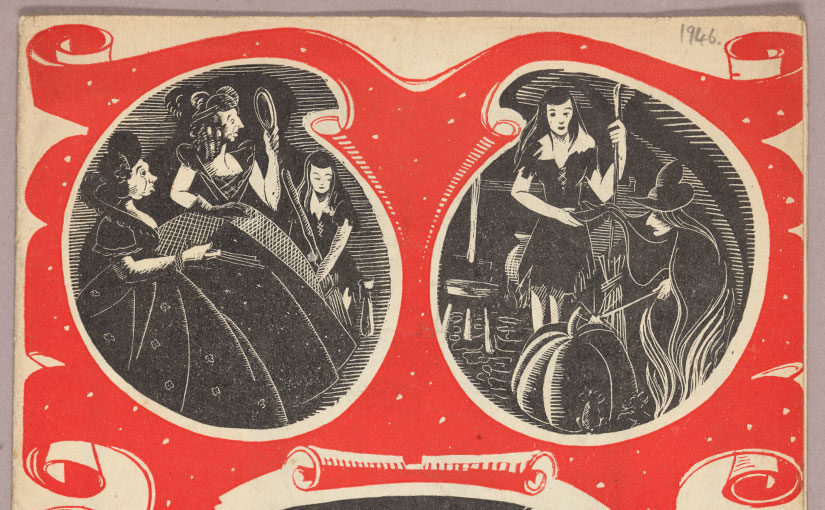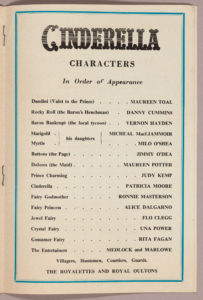by Aedín Ní Bhróithe Clements, Irish Studies Librarian
Generations of Irish children first experienced the theatre at the Christmas Pantomime. This year’s panto offerings in Ireland include The Jungle Book, Sleeping Beauty, and a number of variations on Jack and the Beanstalk such as Olly, Polly and the Beanstalk.
The tradition probably found its way from Britain to Ireland in the eighteenth century, and has delighted children since then. Peculiarly, its popularity has not spread across the Atlantic.
The typical pantomime has a basic story, presented with an abundance of song and dance, great hilarity, and often with predictable gender cross-over as we shall see below. Scenes of slapstick comedy are interspersed with witty dialogue for the grown-ups in the audience. Pantomimes are peppered with current political references, from the setting and characters to the scripted or perhaps ad-libbed asides in the performance.
A selection from our extensive Irish Theatre Program collection gives us a glimpse of the genre in Ireland, as we look at a handful of Dublin theatre programs.
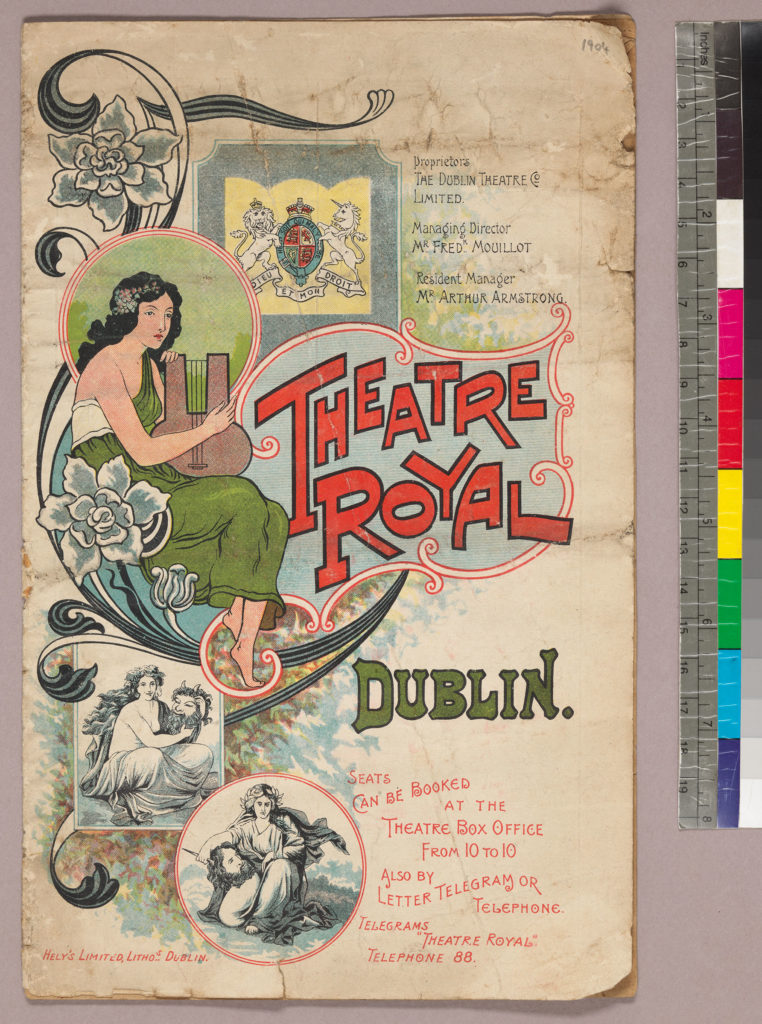
The 1904 pantomime at Dublin’s Theatre Royal was Dick Whittington. According to the program, it was written specially for this theatre by William Wade. In the tradition of pantomime, Dick Whittington is played by a female, Carlotta Levey.
An Irish Times review includes particular praise for Carlotta Levey: “Miss Levey has proved herself to be one of the very best Principal Boys we have had in Dublin for very many years, and has made a host of friends for herself…”
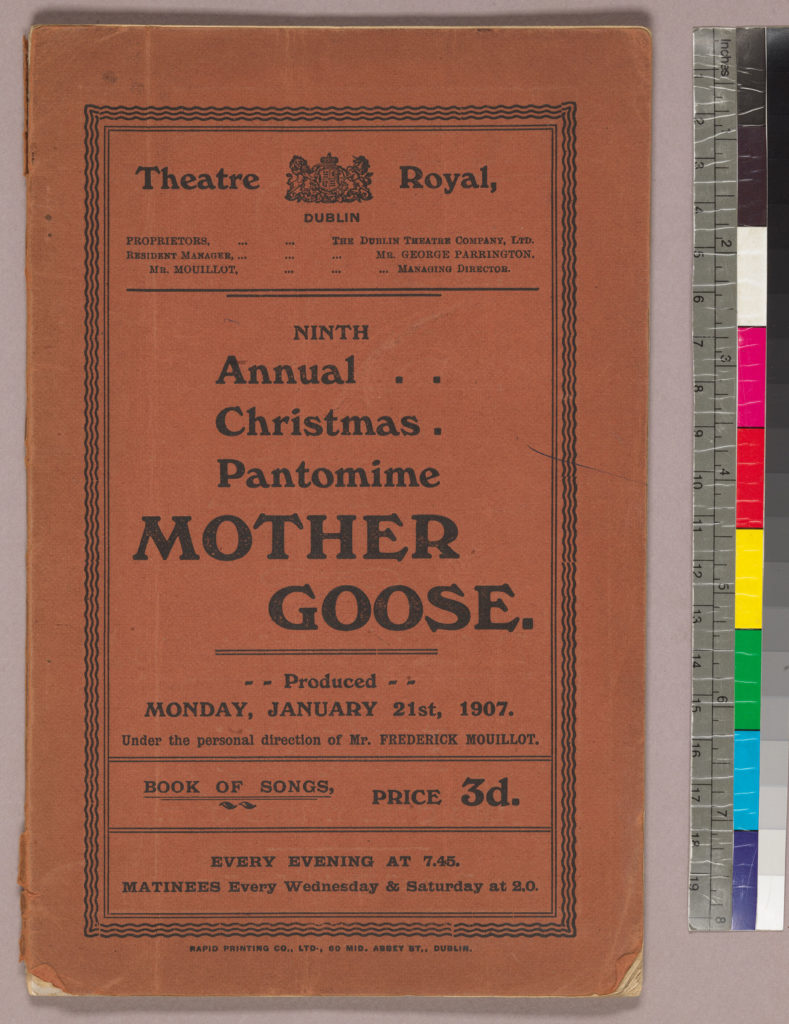
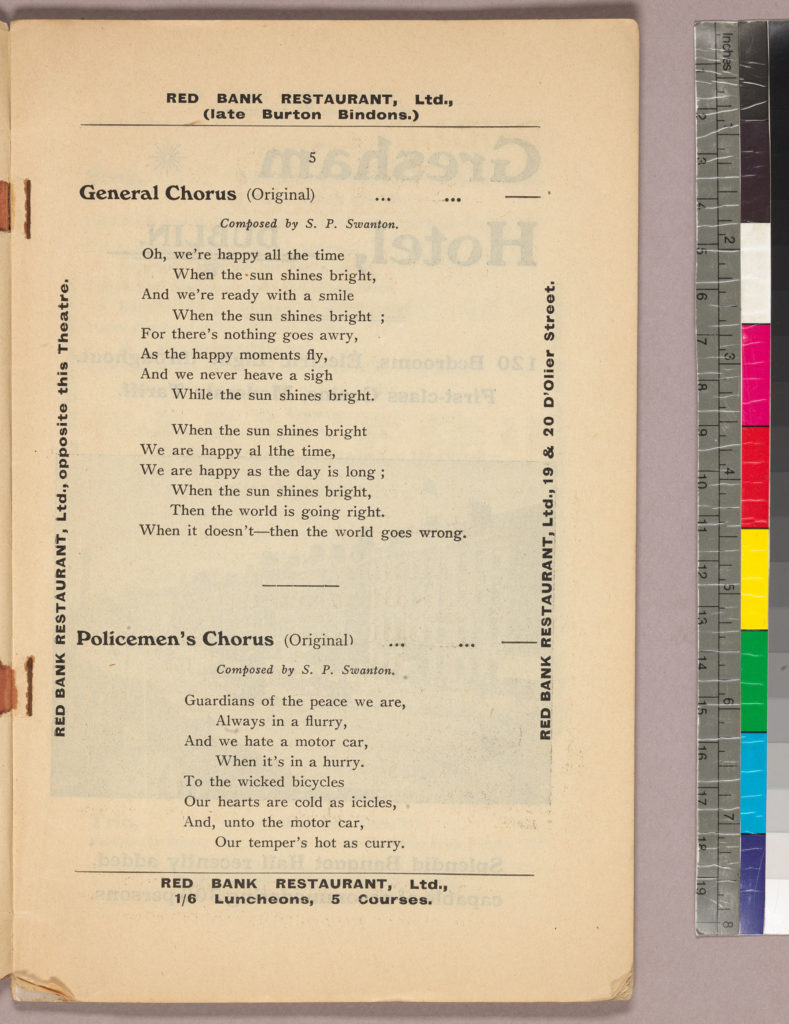
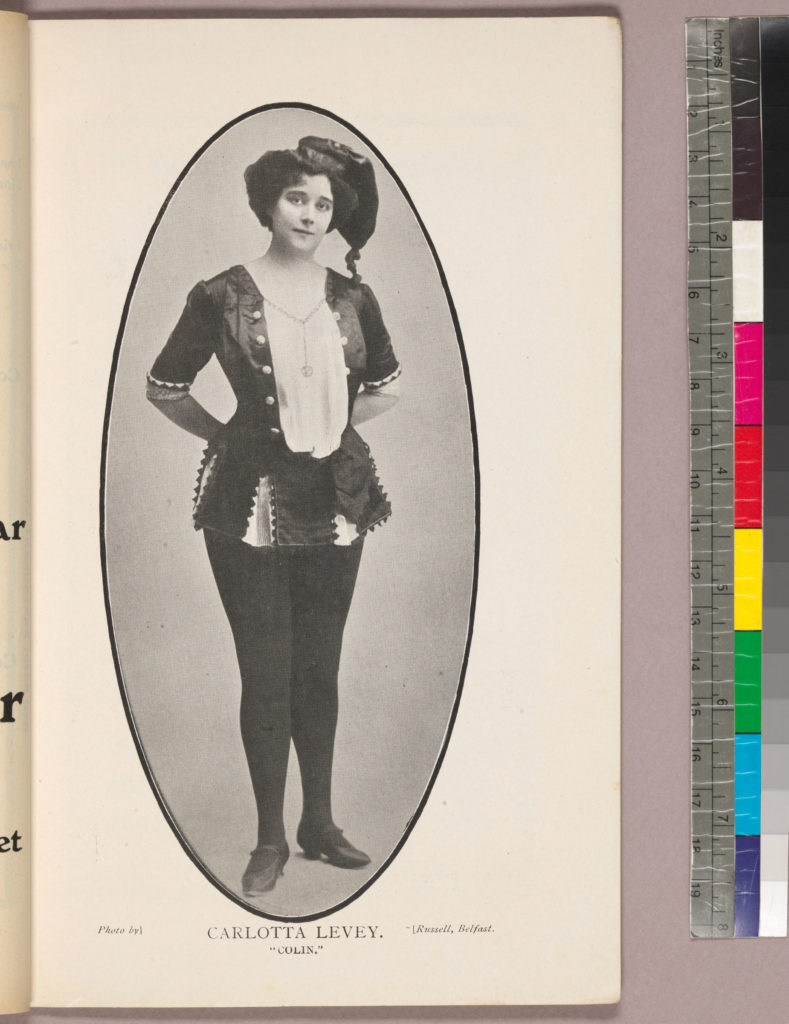
The above program is also a Book of Songs, and includes pages of songs in addition to photographs of some of the cast. Once again, Carlotta Levey plays the principal boy, while Mother Goose is played by a male actor, Martin Adeson.
A newspaper review tells us that local references ‘largely directed against Dublin Corporation, and many of which provoked a good deal of laughter, are furnished.’ (Irish Times 22 Jan 1907, p. 7)
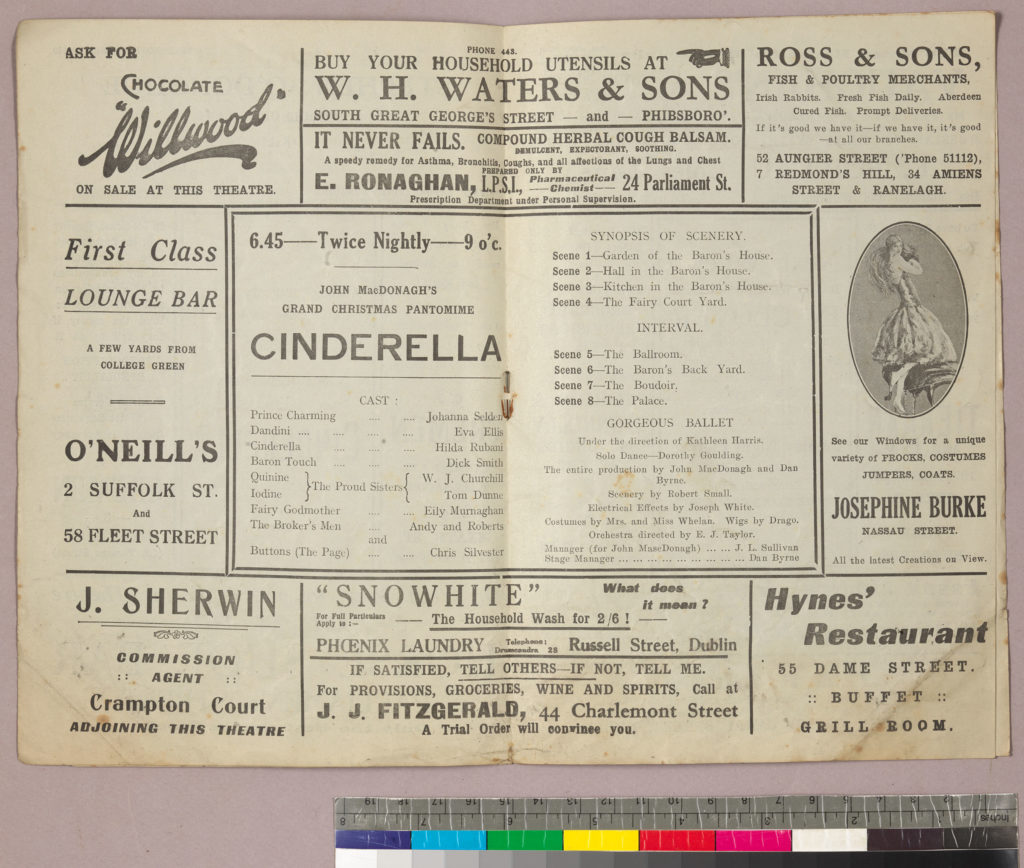
The Olympia Theatre’s annual pantomime in 1928 was Cinderella, a perennial pantomime favorite. The Irish Times review praised almost every element of the show: the scenery, costume, lighting, music, songs, and indeed the actors. The reviewer provides an example of a witty (at that time) local reference: ‘“There are two gentlemen at the door,” says Chris Sylvester as Buttons. “How do you know they are gentlemen?” asks Dick Smith, as Baron Touch. “They have Cork accents,” says Buttons.’ (IT 10 January 1928, p. 4.)
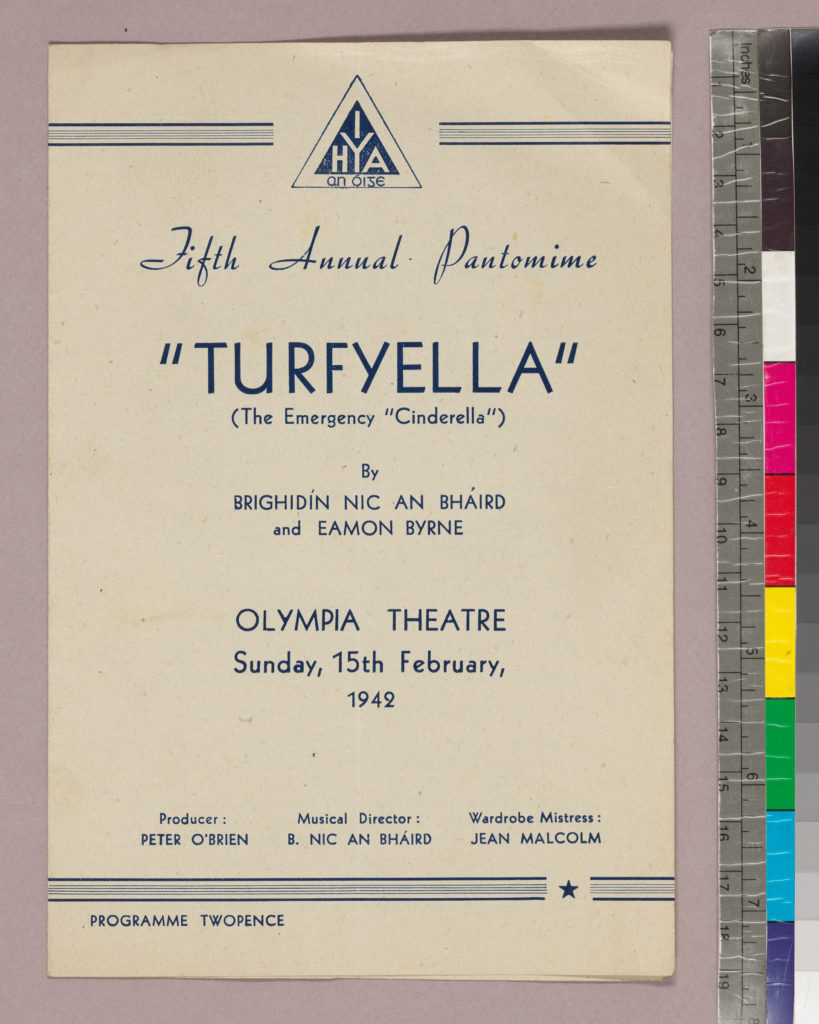
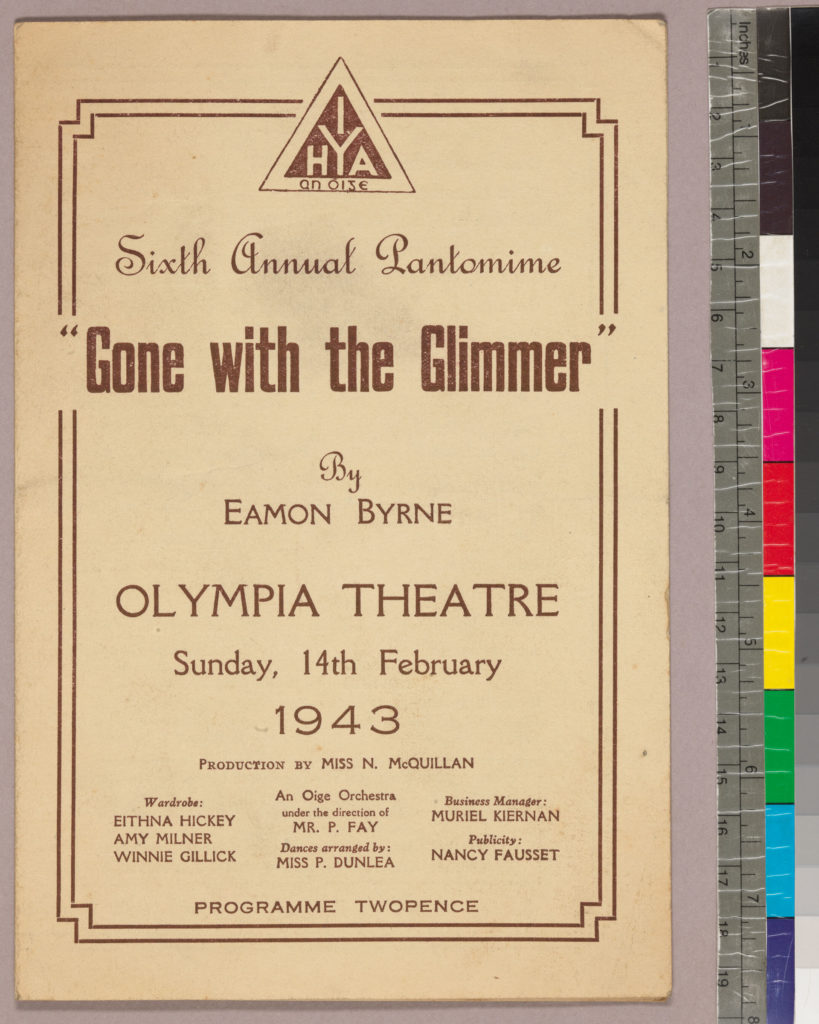
An Óige, the Irish Youth Hostel Association, held their pantomimes in the Olympia theatre from 1941. Our two programs of their pantomimes staged during the “Emergency” (World War II) suggest shows loaded with commentary on the scarcity and rationing of the Emergency years.
From the 1942 program for Turfyella, we can be confident that the reference to turf in the title is connected to the fact that all fuels, among other commodities, were rationed during the Emergency—but as turf, also known as peat, could be cut from the ground in Ireland’s bogs, there was much activity cutting and gathering turf.
In an article written recently during the COVID pandemic, Éanna Brophy helpfully describes aspects of the earlier ‘Emergency’:
Turf was harvested at a frantic rate. The main avenue of the Phoenix Park was eventually flanked on both sides by ton upon ton of turf destined for the fires of the people of Dublin. The avenue was soon christened The New Bog Road.
The same article tells us a little about the ‘glimmer’ of the following year’s an Óige pantomime Gone with the Glimmer, by Éamon Byrne. During the Emergency, the use of gas was limited to certain times of the day. A small flow had to be maintained in the pipes, but people were forbidden to turn on their stoves to use this tiny flow of gas.
Hence the arrival of that fearsome figure who still haunts Dublin folklore – the Glimmer Man. Emergency or no emergency there were babies’ bottles to be warmed, and many mothers used the glimmer in desperation to soothe a crying baby. The Glimmer Man had extraordinary powers: he could legally enter your house and check for recent illegal usage of gas by placing his hands on the cooker ring. Guilty parties could have their supply cut off forthwith.
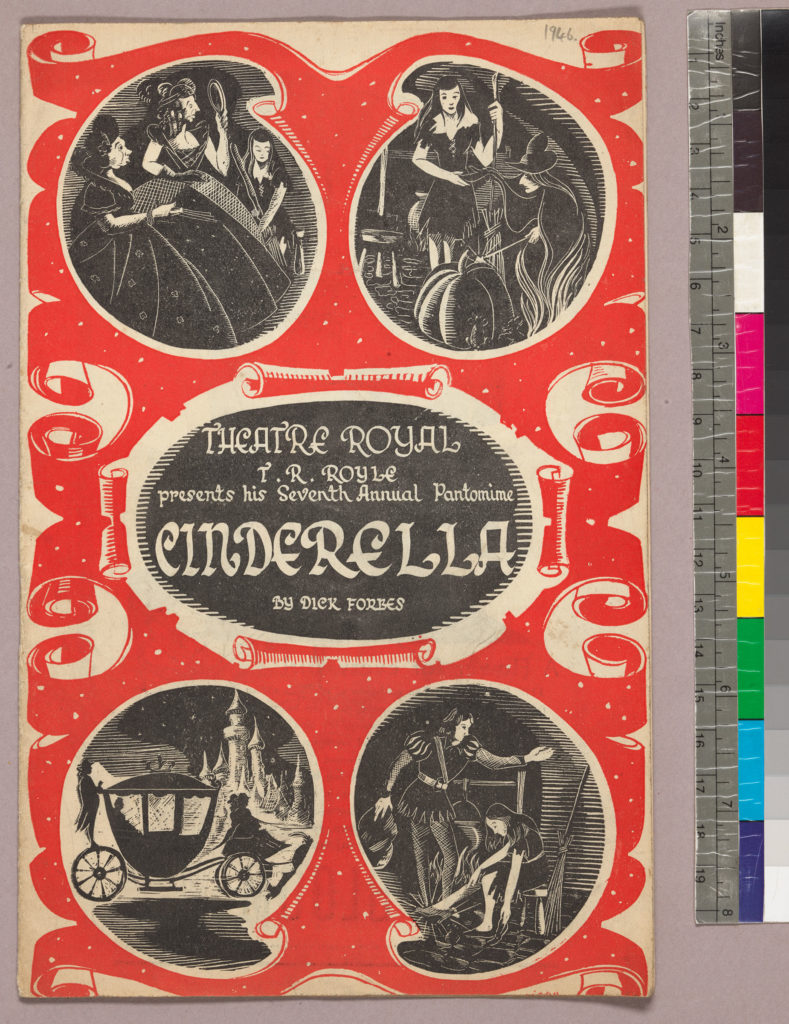
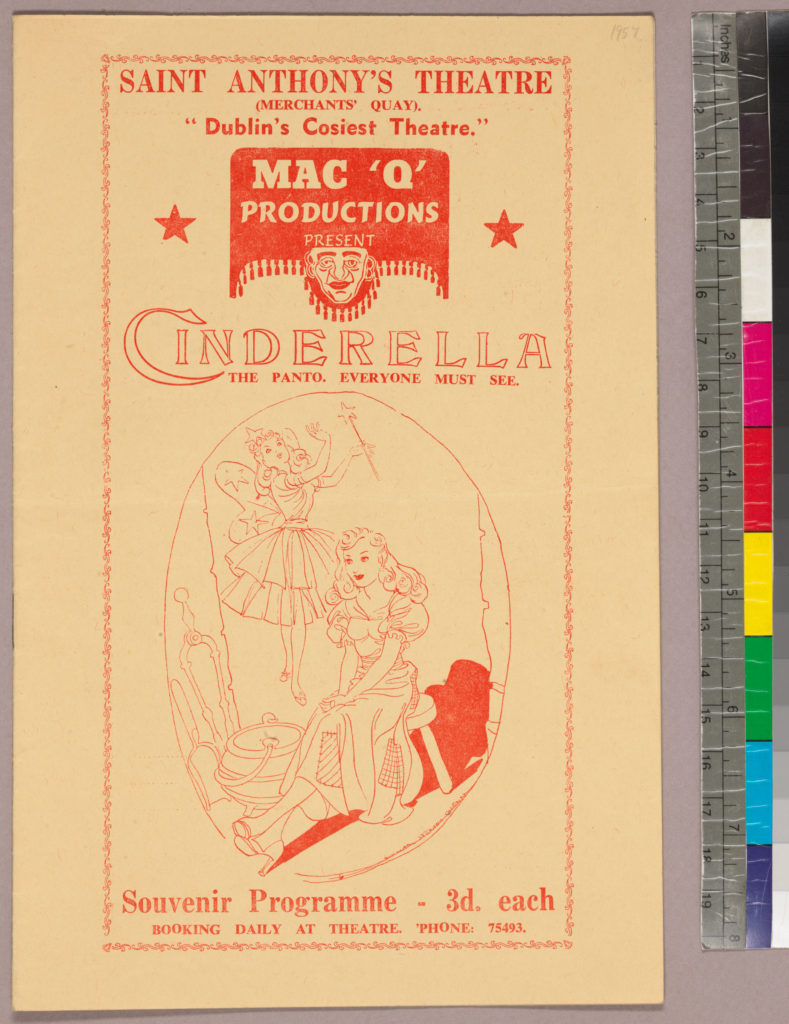
As we glance over the years of programs, we find Cinderella repeated often, from major city theatres such as the Theatre Royal (no longer in existence), the Gaiety (still staging a popular Christmas pantomime), to smaller theatres and local dramatic societies. The above covers are from programs for the Theatre Royal in 1946 and St. Anthony’s Theatre in 1957, while the program below is from the Gaiety’s 1956 pantomime.
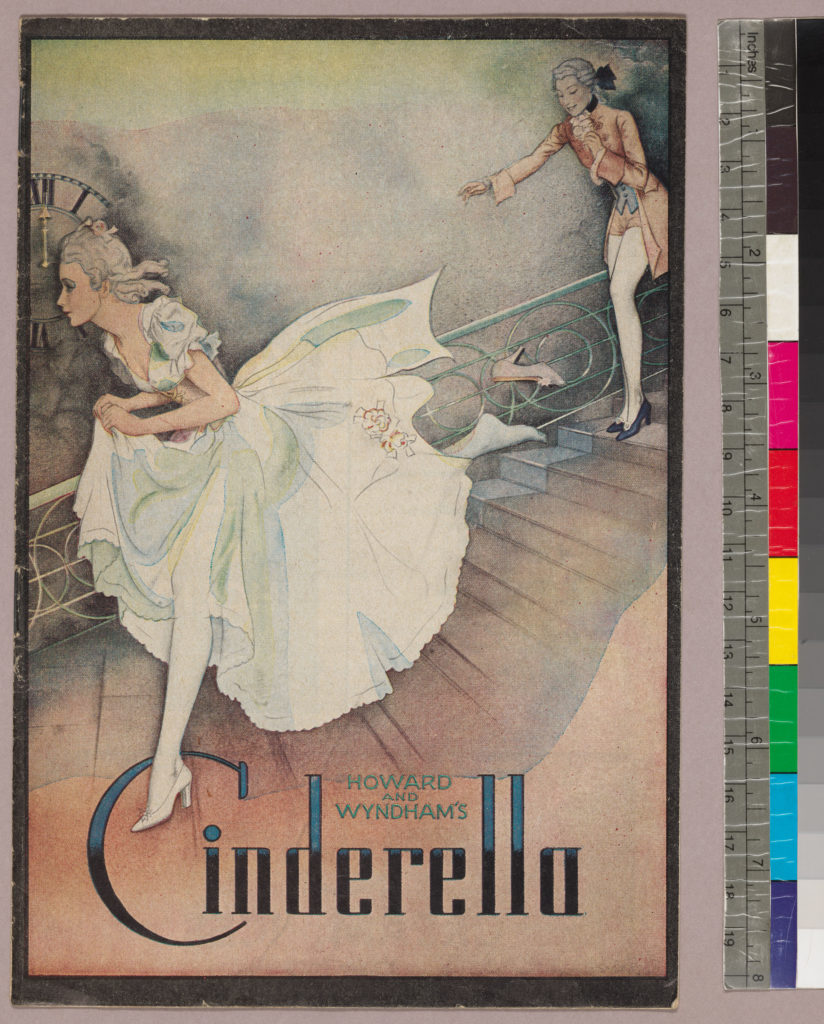
While the Gaiety’s pantomime has been a regular event since 1873, it was only during the mid-twentieth century, under the management of Louis Elliman, that their pantomime became home-produced rather than imported. The cast list here shows Jimmy O’Dea playing Buttons, a very important role in the pantomime Cinderella, and Maureen Potter playing the maid, Dolores.
Mícheál Mac Liammóir and Milo O’Shea, must have been a great sight as the sisters Marigold and Myrtle, while the valet Dandini is played in another gender cross-over by Maureen Toal.
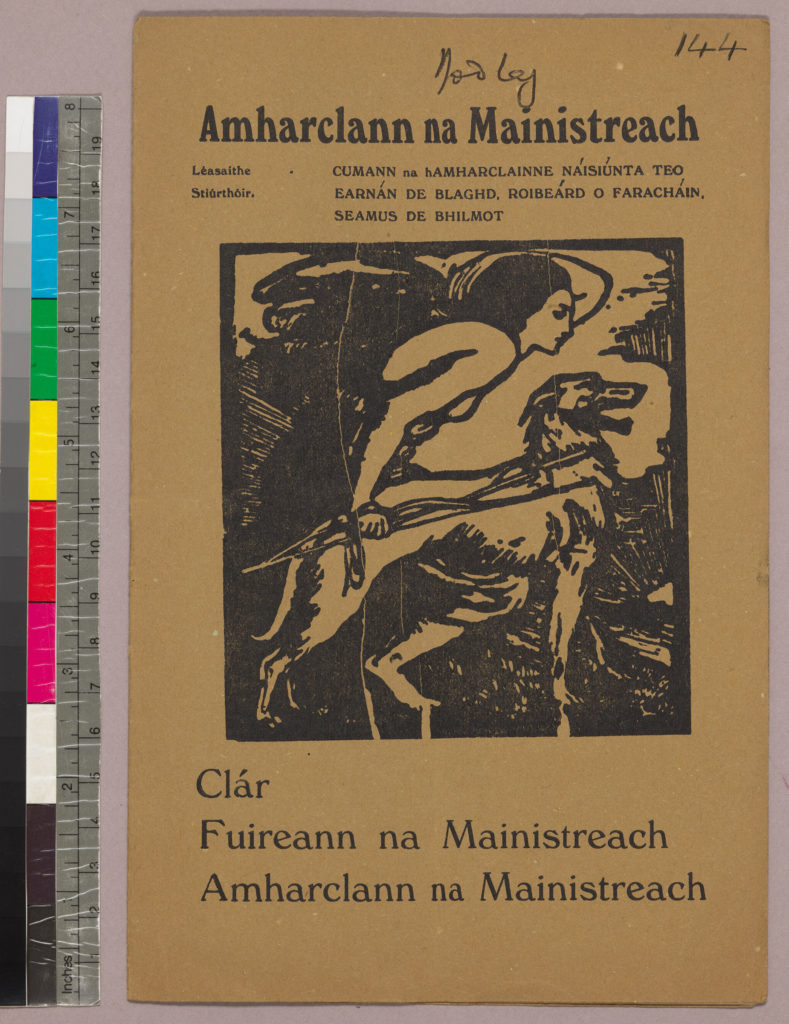
Our theatre program collection began with some two hundred Abbey theatre programs, and has expanded to include programs of many theatres throughout Ireland. The Abbey, Ireland’s National Theatre, began its Irish-language pantomimes in 1945 with Muireann agus an Prionsa by Mícheál Ó hAodha, based on The Golden Apple by Lady Gregory.
Our program for the 1961 Abbey pantomime, or geamaireacht, is for another tale with a princess and a magical kingdom. In An Sciath Draíochta, Princess Clíona is banished from Tír na nÓg by the witch, Muiregáin. The hero, Aonghus, rescues her with the help of the magical shield of the title, and after many adventures.
In some later pantomimes, the magical setting takes the form of an overt parallel to Ireland. The plot of the Abbey’s Flann agus Cleimintín (1963) would not be clear to a very young audience. The mythical land of youth, Tír na nÓg, is partitioned and therefore vulnerable. However, the opportunistic sea-god and the emperor of China are foiled in their tracks when the border is abolished. The synopsis provided in the program was probably essential to follow this plot.
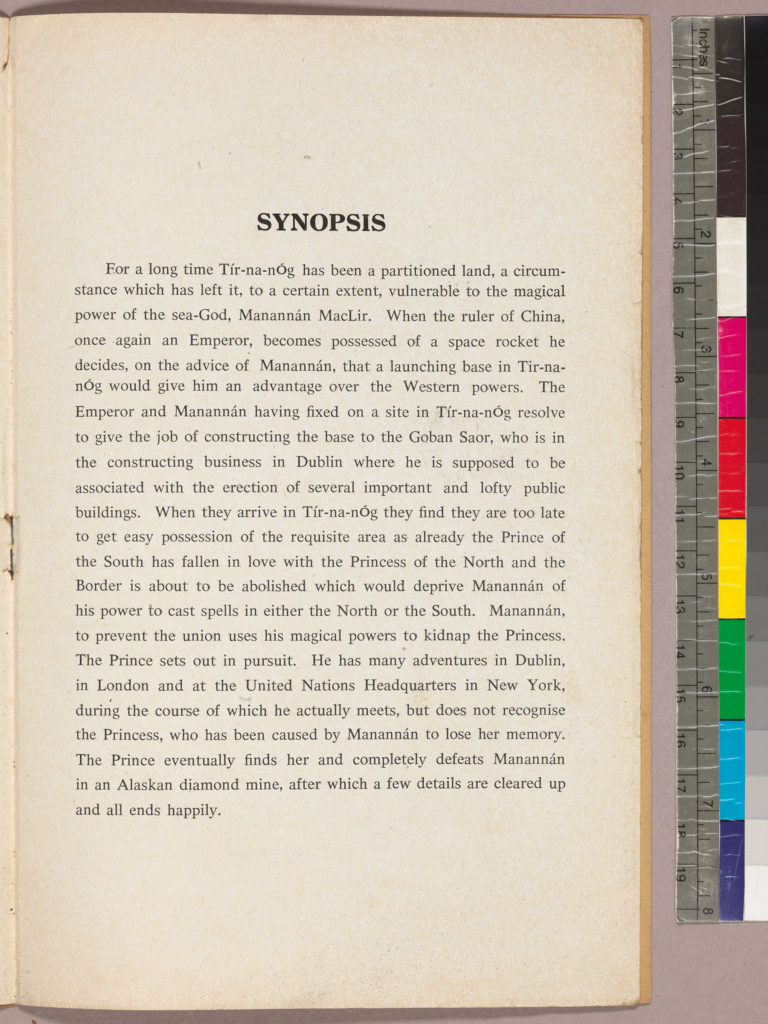
Partition is once again the subject of the 1964 pantomime, Aisling as Tír-na-nÓg. The story begins with dissatisfaction with the Irish Partition, and a request to an ancient king to come from Tír na nÓg and reunite the country. The call is answered by the king’s son Conall who travels the land and ends up crowned king of Ireland, along with his queen, the heroine of the title, Aisling.
The examples selected here are from a very large collection of programs of many kinds of performance in theatres throughout Ireland, over a century and more. They are currently being cataloged, and these titles will eventually be added to the existing list of programs on our archival finding aid.
